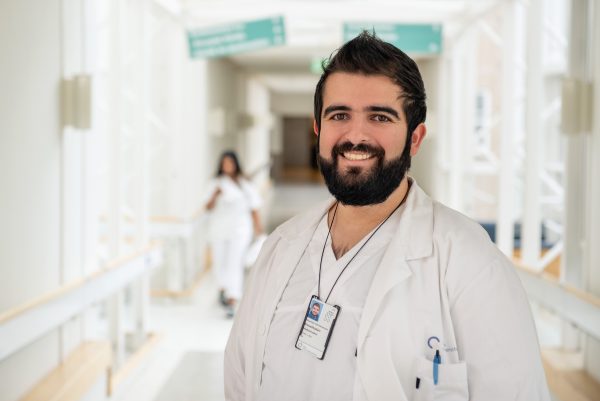Aortic stenosis: a great challenge
Aortic stenosis is one of the most common heart diseases. The heart’s aortic valve allows blood to flow into the aorta, the main artery that carries blood to your body, and stopping it from flowing back into the heart when the heart relaxes. When someone is diagnosed with aortic stenosis, this means that the aortic valve is too narrow. As a result, the heart works harder to pump blood through the narrow valve. Over time, this added stress can weaken the heart and result in heart failure. Unfortunately, there are no medical therapies that have been proven to delay the progression of aortic stenosis, therefore the only effective treatment for those patients is to replace the old valve with a new one.
…but when should you get a new valve?
Unfortunately, it can be very challenging to decide the optimal time to replace the valve. If the procedure is performed too early, it would subject the patient to unnecessary risks. On the other hand, if the valve replacement is performed too late, it will be impossible to regain normal heart function.
«We believe that the key to solving this challenge lies in better evaluation of the heart’s function and structure», says Mohammed Almashhadani, a Medical Research Curriculum Student at Institute for Experimental Medical Research.
Powerful magnetic fields to the rescue
Cardiac magnetic resonance imaging (CMR) is a powerful imaging technique that allows us to both measures the heart’s structure and function at the same time. CMR utilizes a strong magnetic field, radio signals, and a computer to produce very detailed pictures of the heart without using radiation like that used for X-rays. The stronger the magnetic field is, the more accurate and precise its measurements are.
«Our CMR has a magnetic field stronger than junkyard magnets capable of lifting cars and 300 times stronger than your refrigerator magnet», explains Mohammed.
«This can provide invaluable details that would help doctors decide the optimal time to operate. However, the currently available CMR-based techniques only scratch the surface of what actually occurs in the hearts of aortic stenosis patients», he continues.


